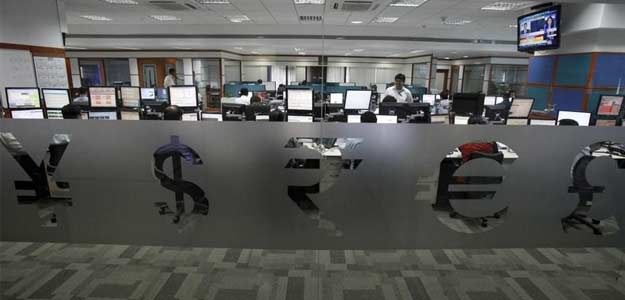
The Indian rupee, along with most other emerging market
currencies, has come under sustained selling pressure since China
devalued its yuan on August 11. The rupee has depreciated by 2.4 per
cent (at a low of 65.43/dollar hit today) in a week since August 11.
That compares with 0.5 per cent depreciation in the rupee since January
1, 2015.
The rupee's recent fall has pressured domestic markets as well, but a fall beyond 67 per dollar may create panic among investors, according to Anindya Banerjee of Kotak Securities.
"Beyond 67 or so it will start hitting unhedged players in the bond market, and it can become a self-fulfilling trade. The more it will depreciate the more stop-losses will get triggered and it will fall further," Mr Banerjee added.
Despite a sharp fall, the rupee has outperformed other emerging market currencies. Mr Banerjee says India's better current account position and higher real interest rates (nominal interest rate minus inflation) is helping the rupee weather global turbulence.
According to Mr Banerjee, a breach of 67 per dollar may lead to capital outflows from domestic stock and debt markets. Foreign institutional investors who have unhedged positions in the bond market will first start liquidating their position and the outflow of dollar will happen triggering further fall in rupee, he added.
During 2008, India had a comfortable current position and the inflation was also low, still rupee depreciated by about 33 per cent in 15 months because of capital outflow from equity market, said Mr Banerjee.
The rupee, which fell to 65.43 per dollar in morning session, had recovered to 65.24 as of 1 p.m
The rupee's recent fall has pressured domestic markets as well, but a fall beyond 67 per dollar may create panic among investors, according to Anindya Banerjee of Kotak Securities.
"Beyond 67 or so it will start hitting unhedged players in the bond market, and it can become a self-fulfilling trade. The more it will depreciate the more stop-losses will get triggered and it will fall further," Mr Banerjee added.
Despite a sharp fall, the rupee has outperformed other emerging market currencies. Mr Banerjee says India's better current account position and higher real interest rates (nominal interest rate minus inflation) is helping the rupee weather global turbulence.
According to Mr Banerjee, a breach of 67 per dollar may lead to capital outflows from domestic stock and debt markets. Foreign institutional investors who have unhedged positions in the bond market will first start liquidating their position and the outflow of dollar will happen triggering further fall in rupee, he added.
During 2008, India had a comfortable current position and the inflation was also low, still rupee depreciated by about 33 per cent in 15 months because of capital outflow from equity market, said Mr Banerjee.
The rupee, which fell to 65.43 per dollar in morning session, had recovered to 65.24 as of 1 p.m

